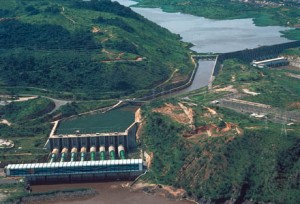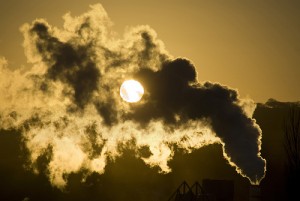Holiday cheer, with a conscience

It’s that time of year…the most wonderful time of year, of course! In many parts of the world, people are wrapping up by the fire, roasting chestnuts, preparing carols and maybe even doing some Christmas shopping (if they’re really organized, it’s already done of course). Some of you might be buying a Christmas tree to festoon with lights and ornaments and colorfully-wrapped presents.
So what’s more environmentally conscious – a real tree or a fake tree? It turns out most experts believe a real tree is the best choice because it means supporting Christmas tree farms, which are good for the environment and economy. Plus, real trees are biodegradable, unlike the plastic option.
If you’ve ever bought a pine tree, you know the one big disadvantage: there are pine needles everywere. Well, now there’s a green solution to the problem: a Swiss company has come up with something called the ”treedress.” It’s a special tree cover that takes you from the tree farm to your house and back out onto the curb for recycling. It’s made of 100% natural and sustainable products, and it keeps needles from getting all over your car, your house, or wherever else you might take your tree. There’s even a video demonstration of how the whole treedress process works. Not a bad idea to make Christmas a little bit easier and eco-friendlier…
Hydropower Goes Big

South Africa and the Democratic Republic of Congo have signed a pretty impressive agreement: together they want to develop the biggest hydropower project in the world. It’ll be called the Grand Inga project (because it will be built on the Inga falls), and the president’s office in South Africa says it has an estimated capacity of 40,000 megawatts.
It’s not expected to be completed until 2025 and cost a lot of money, but offiicials in both countries believe investment in the future of clean energy is crucial. And it could completely change Africa’s energy sector. The Grand Inga project alone could reportedly bring energy to almost half of the population across Africa. And with more than 1 billion people living across the continent, that’s a pretty astonishing feat.
Bonn’s Climate Conference

The Bonn 2011 Nexus Conference kicked off today in the city of Bonn! The conference title is The Water Energy and Food Security Nexus – Solutions for the Green Economy,” organized by the German government. Over the next three days, more than 500 experts, officials, academics and activists from around the world will meet to talk about the growing crises in food, water and energy security – especially as the population keeps growing so fast.
The conference participants will focus on three different dimensions: social, economic and ecologic. Basically, the group wants to develop policy ideas and launch concrete initiatives in food, water and energy efficiency: how to create more resources with less, how to invest in sustainable ecosystem services and how to make resources available to everyone.
![]()
The website for the conference has lots of info on the issues at hand, plus a breakdown of who is speaking, what the program is and what the participants hope to acheive. You can even follow along on some of the panel discussions with a live stream. There’s even a Nexus blog with the latest info and analysis.
The conference is especially important with the UN climate talks in Durban looming just around the corner and the Rio 2012 UN conference on sustainable development. Hope you tune in if you can…
Come to Germany for one year
 You want to make the combat against climate change your profession? You are from a developing or recently industrialised country? You feel like living and working in Germany for one year?
You want to make the combat against climate change your profession? You are from a developing or recently industrialised country? You feel like living and working in Germany for one year?
If the answer to the above questions is yes, you should apply now for the International Climate Protection Fellowship. It is financed by the German Ministry for the Environment (BMU). Applications are accepted until 15 December 2011.
If you apply or think about applying, please let us and others know your thoughts about the climate fellowship. Leave your comment on this Blog or on our Facebook page.
A more detailled description of the fellowship programme can be found on the homepage of the Germin Ministry for the Environment.
CO2 emissions rise beyond worst expectations
 Barely a month ahead of the UN climate summit in Durban, new figures show that global CO2 emissions a rising at record pace. The grim numbers from the US Department of Energy say the amount of carbon dioxide pumped into our atmosphere in 2010 was 6 percent higher than the year before.
Barely a month ahead of the UN climate summit in Durban, new figures show that global CO2 emissions a rising at record pace. The grim numbers from the US Department of Energy say the amount of carbon dioxide pumped into our atmosphere in 2010 was 6 percent higher than the year before.
6 percent doesn’t sound much? Well, it corresponds to more than half a billion metric tons of CO2 extra! Or, as a commentator on this blog puts it “We’re really flooring the accelerator as we approach the cliff”








Feedback